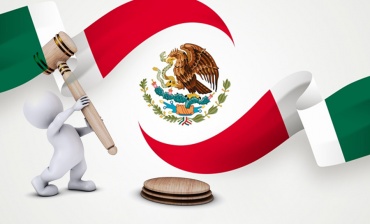The pharmaceutical industry is one of the most critical sectors in Mexico, with a market size that exceeds $10 billion annually. However, the market is dominated by a few players, which raises concerns about monopolistic practices. In this article, we will analyze the pharmaceutical market dynamics in Mexico from a monopolistic perspective, highlighting the key players, market trends, and potential implications for the industry and consumers.
Market Structure
The Mexican pharmaceutical market is characterized by a high level of concentration, with a few large companies controlling a significant share of the market. The top five players in the market, including Pfizer, Merck, Johnson & Johnson, Novartis, and Roche, hold more than 50% of the total market share. This concentration is not only limited to the domestic market but also extends to the global market, with multinational corporations dominating the industry.
The market structure can be described as an oligopoly, where a small number of firms compete with each other. This competition can lead to collusive or non-competitive behavior, as firms may agree to fix prices, restrict output, or allocate markets among themselves. The lack of competition can result in higher prices for consumers and reduced innovation, as firms may focus more on maintaining their market share than on developing new products.
Barriers to Entry
One of the primary reasons for the high level of concentration in the Mexican pharmaceutical market is the presence of significant barriers to entry. These barriers make it challenging for new companies to enter the market and compete with established players. Some of the significant entry barriers include:
High research and development costs: Developing new drugs and obtaining regulatory approvals can be a costly and time-consuming process, which discourages new entrants.
Brand loyalty: Established companies have built strong brands over time, which makes it difficult for new companies to gain market share.
Distribution channels: The distribution channels in Mexico are largely controlled by the big pharmaceutical companies, making it challenging for new entrants to access the market.
Regulatory hurdles: The regulatory framework in Mexico can be complex and challenging to navigate, which can discourage new companies from entering the market.
Market Trends
Despite the high level of concentration in the market, there are several trends that are transforming the pharmaceutical industry in Mexico. Some of the notable trends include:
Generic drugs: The demand for generic drugs is increasing, driven by government policies that promote the use of generic medicines. This shift towards generic drugs has led to increased competition and price pressure for innovator drugs.
Digital transformation: The use of digital technologies is transforming the industry, with companies investing in digital platforms to improve patient engagement, streamline clinical trials, and enhance supply chain management.
Personalized medicine: The increasing focus on personalized medicine is driving the development of new drugs that are tailored to specific patient needs. This trend is expected to continue, with the market for personalized medicine expected to grow at a CAGR of 10% between 2020 and 2025.
Biotechnology: The use of biotechnology is becoming more prevalent in the development of new drugs, with companies investing in research and development to develop new treatments for diseases such as cancer and autoimmune disorders.
Implications
The high level of concentration in the Mexican pharmaceutical market has several implications for the industry and consumers. Some of the key implications include:
High prices: The lack of competition in the market can result in higher prices for consumers, as firms may agree to fix prices or restrict output.
Reduced innovation: The focus on maintaining market share rather than on developing new products can result in reduced innovation, which can have negative consequences for public health.
Limited access to drugs: The high prices and limited competition in the market can result in limited access to drugs, particularly for low-income populations.
Potential for collusive behavior: The high level of concentration in the market can lead to collusive behavior among firms, which can result in anticompetitive practices that harm consumers and the industry as a whole.
In conclusion, the pharmaceutical industry in Mexico is a complex and dynamic market that is influenced by a variety of factors, including government policies, market trends, and the actions of major players. While the industry faces challenges such as high concentration and potential collusive behavior, it also presents opportunities for growth and innovation, particularly in areas such as generic drugs, digital transformation, personalized medicine, and biotechnology.
As the industry continues to evolve, it is important for stakeholders to remain vigilant and work towards creating a more competitive and accessible market. This can be achieved through initiatives such as increasing transparency, promoting competition, and investing in research and development. Additionally, the government can play a key role in shaping the industry’s future by implementing policies that foster innovation and improve access to affordable healthcare.
Ultimately, the future of the pharmaceutical industry in Mexico will depend on the ability of its stakeholders to adapt to changing market dynamics and work towards a common goal of providing high-quality, affordable healthcare to the population. With the right strategies and investments, the industry can continue to thrive and play a vital role in improving the health and well-being of the Mexican people.
Author: Pooyan Ghamari, Swiss Economist & Visionary







